


Notice: This is the official website of the All Empires History Community (Reg. 10 Feb 2002)
How much MONGOL BLOOD do Russians have? |
Post Reply 
|
Page 12> |
| Author | ||
Ruslan 
Janissary 
Joined: 10-Sep-2012 Online Status: Offline Posts: 23 |
 Quote Quote  Reply Reply
 Topic: How much MONGOL BLOOD do Russians have? Topic: How much MONGOL BLOOD do Russians have?Posted: 12-Sep-2012 at 20:48 |
|
|
After the publication of Putin's photos at a pro-Kremlin youth forum in a
summer camp on Lake Seliger in the Russian Tver Region , 350 km north
of Moscow, discussions about a strange unrecognizable face of the
Russian leader erupted on Russian Internet blogs.
Many Russians state that Putin now has a Mongolian-type eye shape and cheek. "Putin is a Mongol!", says a young Democratic opposition leader Roman Dobrokhotov who is also known in the West. Seeing a close-up photo of Putin with two narrow slits as eyelids, Mr. Dobrokhotov writes: "Botox is evil. A little more and he would have to hide his face behind a handkerchief, like Michael Jackson did". Source: Kavkaz Center 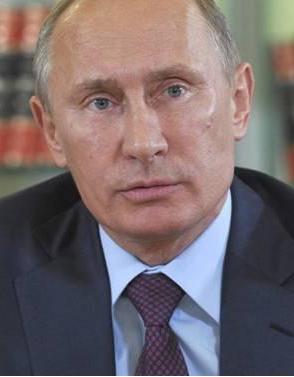 After the Mongol invasion of Russia, the Rurikid rulers of Russian principalities were eager to obtain political advantages for themselves and their countries by marrying into the House of Genghis. Alexander Nevsky was adopted by Batu Khan as his son. Alexander's grandson Yury of Moscow married a sister of Uzbeg Khan; however, they had no progeny. On the other hand, petty Mongol princelings of Genghisid stock sometimes settled in Russia. For instance, Berke's nephew adopted the Christian name Peter and founded St. Peter's Monastery in Rostov, where his descendants were long prominent as boyars.  St. Theodore Stratelates, the patron saint of Fyodor the Black, as illustrated in his personal Gospel Book. The issue of three Russian-Mongol marriages may be traced down to the present. The most famous was the marriage of St. Fyodor the Black, later proclaimed a patron saint of Yaroslavl, to a daughter of the Mongol khan Mengu-Timur.[3] Fyodor's relations with the khan were idyllic: he spent more time in the Horde (where he was given extensive possessions) than in his capital. Male-line descendants of Fyodor's marriage to the Tatar princess include all the later rulers of Yaroslavl and two dozens princely families (such as the Shakhovskoy, Lvov, or Prozorovsky, among others), which passed Genghis genes to other aristocratic families of Russia. Prince Gleb of Beloozero, a grandson of Konstantin of Russia, was another Rurikid prince influential at the Mongol court. Gleb married the only daughter of Khan Sartaq. From this marriage descends the House of Belozersk, whose scions include Princes Ukhtomsky and Beloselsky-Belozersky. The most problematic is the marriage of Narimont, the second son of Gediminas of Lithuania, to Toqta's daughter. The earliest source for this marriage is the "Jagiellonian genealogy", compiled in the 18th-century from Ruthenian chronicles by one Joannes Werner. While the marriage is not utterly impossible (Narimont spent several years in the Horde), there are no extant chronicles which mention Narimont's wife. This highly uncertain gateway derives particular interest from the fact that the Galitzine, Khovansky and Kurakin princely families are Narimont's agnatic descendants. Ivan the Terrible,his mother Elena Glinskaya is a descendant of Mongol Mamai Khan Sain-Burat (Simeon Bekbulatovich),Tsar of Russia,direct descendant of Genghis Khan  Boris Godunov,Tsar of Russia,Mongol-tatar origin  Peter the Great  Mikhail Kutuzov,the Russian general who defeated Napoleon.Mongol-Tatar origin  Russian alcoholism and the "Mongoloid gene" Russian alcoholism and the "Mongoloid gene" SCIENTISTS researching cures for alcoholism and hangovers say that they have found a genetic link between Russians’ traditional weakness for drink and the marauding Mongol armies. As many as 50 per cent of Muscovites are estimated to have inherited Mongol genes that make them absorb more alcohol into the bloodstream and break it down at a slower rate than most Europeans, they say. That means that they get more drunk and have worse hangovers, and are more likely to become addicted to alcohol, given Russia’s taste for vodka, its harsh climate and the social and economic chaos after the collapse of the Soviet Union. “The difference is huge — in reaction speed, memory, hand tremor — and in how they recover,” Vladimir Nuzhny, of the Health Ministry’s National Narcology Research Centre, said. “On average, 50 per cent of people in Moscow have this Mongoloid gene. So this, we think, is part of the problem.” As part of the study, the scientists paid 12 volunteer students to drink 350 grams, about a third of a bottle, of vodka in an hour, and then monitored their behaviour. “That’s a lot by Western standards, but it’s normal for Russia,” Dr Nuzhny told The Times. “At first they thought it was great, because they were being paid to drink, but after a while they realised it was more like work.” The intoxicated students had to perform a series of tests, including answering questionnaires and playing rally-driving computer games, and they were breathalysed at regular intervals. The scientists even measured their ability to stand up straight. After sleeping off the effects in a dormitory at the laboratory — which had a karaoke machine — the students were given a slap-up breakfast before doing more tests to measure their hangovers. The study showed that those with the Mongol genes absorbed 50 per cent more alcohol into the bloodstream at peak levels and metabolised it much more slowly than the other students. “The way they get drunk is completely different. They are also more likely to feel aggressive or depressed,” Dr Nuzhny said. “They do not necessarily look Mongolian, but the gene that governs how they metabolise alcohol is Mongoloid.” The Mongols swept across Asia and Russia and into Europe in the 13th century and ruled Russia for two centuries. Inter-marriage with the Slavs and other ethnic groups was common. Scientists have long known that people of Mongol extraction, including Japanese,Koreans and Northern Chinese, have an enzyme for metabolising alcohol that is different from that of Caucasian Europeans. Dr Nuzhny claims that his study is the first to look at the effect of alcohol on Russians who have inherited Mongol genes. He says that the phenomenon can be explained partly by evolution. The nomadic Mongols, whose only indigenous form of alcohol was fermented mare’s milk, evolved with a different enzyme from the settled Europeans, with their long tradition of producing stronger grape and grain-based alcohol. Dr Nuzhny’s research is partly funded by pharmaceutical companies trying to develop drugs to cure hangovers and alcoholism. Russians drink about 15 litres of pure alcohol a head each year, one of the highest rates in the world, and by some estimates one in seven Russians are alcoholics. Alcohol is largely to blame for a fall in life expectancy to less than 59 since the fall of the Soviet Union. Lenin is 1/4 Kalmyk Mongol 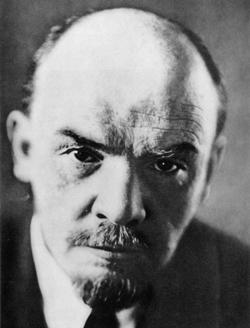 Semen Budyonnuyy,the greatest Russian military commander 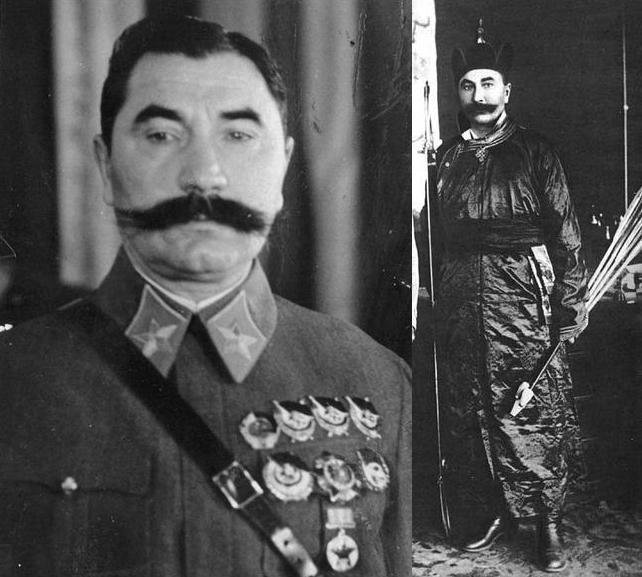 Basan Gorodvikhov,the man who led army to Berlin in 1944 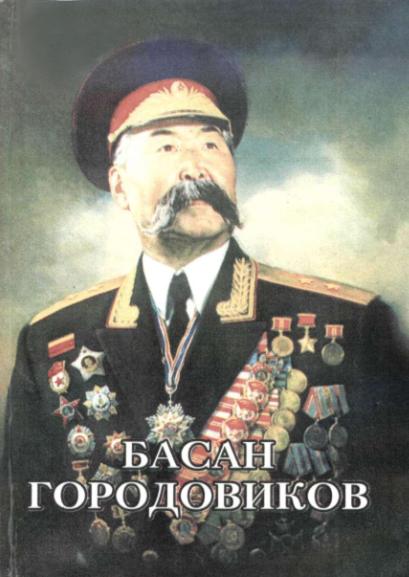 Stalin Khan lol 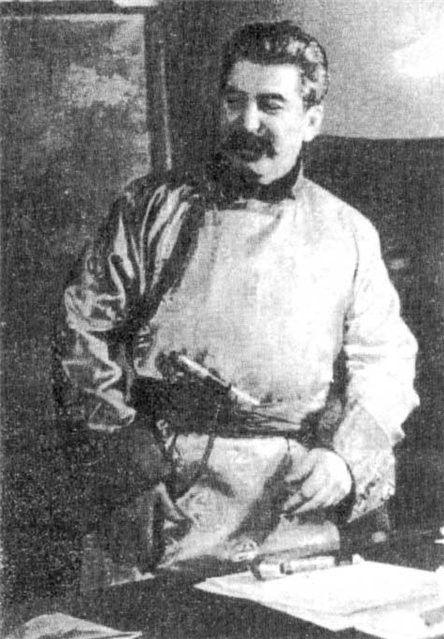 Semyon Timoshenko 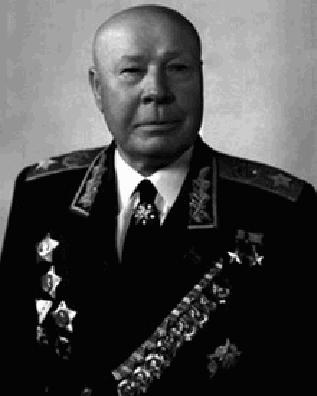 Petorov Ivanovivh  Andrey Yeryomenko  Leonid Brezhnev,the General Secretary of the Central Committee of the Communist Party of the Soviet Union from 1964 until 1982 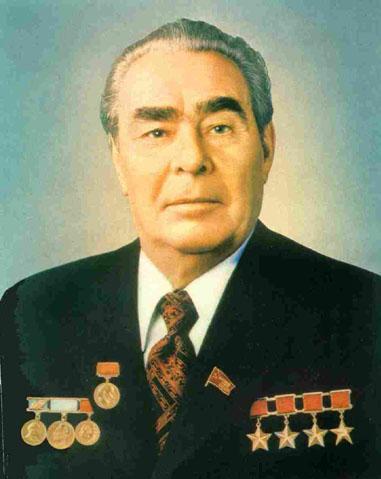 The Effects of the Mongol Empire on Russia
|
||
 |
||
Bushido 
Janissary 
Joined: 12-Sep-2012 Online Status: Offline Posts: 12 |
 Quote Quote  Reply Reply
 Posted: 12-Sep-2012 at 21:22 Posted: 12-Sep-2012 at 21:22 |
|
|
Mongol influence in Russia is huge,there is a historical documentary filmed by NHK Japan which tells about that. however it doesn't have English translation:
http://www.youtube.com/watch?v=Ads1Mcw5k58&feature=youtu.be Edited by Bushido - 12-Sep-2012 at 21:29 |
||
 |
||
Bushido 
Janissary 
Joined: 12-Sep-2012 Online Status: Offline Posts: 12 |
 Quote Quote  Reply Reply
 Posted: 13-Sep-2012 at 19:34 Posted: 13-Sep-2012 at 19:34 |
|
|
that's why Russians are so powerful on battlefield
|
||
 |
||
Ollios 
Chieftain 
Joined: 22-Feb-2011 Location: Diyar-ı Rum Online Status: Offline Posts: 1130 |
 Quote Quote  Reply Reply
 Posted: 13-Sep-2012 at 23:29 Posted: 13-Sep-2012 at 23:29 |
|
|
a famous idiom; "Scratch the Russian and you will find the Tartar"
|
||
|
Ellerin Kabe'si var,
Benim Kabem İnsandır |
||
 |
||
Nick1986 
Emperor 

Mighty Slayer of Trolls Joined: 22-Mar-2011 Location: England Online Status: Offline Posts: 7940 |
 Quote Quote  Reply Reply
 Posted: 14-Sep-2012 at 20:10 Posted: 14-Sep-2012 at 20:10 |
|
|
Budyonny in particular bears a close resemblence to my own grandfather. I wouldn't be surprised if he had Tatar blood, though it's impossible to prove as the records have long since been destroyed
|
||
|
Me Grimlock not nice Dino! Me bash brains!
|
||
 |
||
heyamigos 
Samurai 
Joined: 31-Aug-2012 Online Status: Offline Posts: 126 |
 Quote Quote  Reply Reply
 Posted: 15-Sep-2012 at 06:12 Posted: 15-Sep-2012 at 06:12 |
|
|
20-25% of Russians have the Haplogroup N (Y chromosome paternal genetic marker). This is good enough evidence they have genes from Huns, Cumans, Pechenegs, Mongol/Tatars, etc. BTW, Rurik (the supposed first Viking king of Russia) also was found to have Haplogroup N marker. They later found, he was of Finnish, not Swedish descent.
Russians are not good drinkers. They turn red after a few drinks and get drunk easily. This another sign of Mongoloid admixture
|
||
 |
||
Nick1986 
Emperor 

Mighty Slayer of Trolls Joined: 22-Mar-2011 Location: England Online Status: Offline Posts: 7940 |
 Quote Quote  Reply Reply
 Posted: 15-Sep-2012 at 21:19 Posted: 15-Sep-2012 at 21:19 |
|
Most Slavs love a good drink. They invented vodka, after all |
||
|
Me Grimlock not nice Dino! Me bash brains!
|
||
 |
||
TheAlaniDragonRising 
AE Moderator 
Spam Fighter Joined: 09-May-2011 Online Status: Offline Posts: 6084 |
 Quote Quote  Reply Reply
 Posted: 15-Sep-2012 at 22:29 Posted: 15-Sep-2012 at 22:29 |
|

|
||
|
What a handsome figure of a dragon. No wonder I fall madly in love with the Alani Dragon now, the avatar, it's a gorgeous dragon picture.
|
||
 |
||
Ruslan 
Janissary 
Joined: 10-Sep-2012 Online Status: Offline Posts: 23 |
 Quote Quote  Reply Reply
 Posted: 10-Nov-2012 at 23:55 Posted: 10-Nov-2012 at 23:55 |
|
|
Sergey Kuzhugetovich Shoygu (Russian: Серге́й Кужуге́тович Шойгу́) (born May 21, 1955) is a Russian political figure who was Minister of Emergency Situations from 1994 to 2012. He holds the military rank of General of the Army. He is also the President of the International Sport Federation of Firefighters and Rescuers.
Sergey was born Chadan, Tuva to a Tuvan father and a Russian mother. In March 2012, he was announced as one of the potential candidates for the Governor of Moscow Oblast. In April 5, 2012 he was elected as the 3rd Governor of Moscow Oblast, and entered into his office in May 11, 2012.[4] On November 6th, 2012 he was appointed to the Minister of Defence of Russia.  |
||
 |
||
heyamigos 
Samurai 
Joined: 31-Aug-2012 Online Status: Offline Posts: 126 |
 Quote Quote  Reply Reply
 Posted: 13-Nov-2012 at 03:59 Posted: 13-Nov-2012 at 03:59 |
|
|
The gymnast girl Mustafina. Must be Tatar name.
|
||
 |
||
SergejJego 
Immortal Guard 
Joined: 15-Nov-2012 Online Status: Offline Posts: 3 |
 Quote Quote  Reply Reply
 Posted: 15-Nov-2012 at 05:07 Posted: 15-Nov-2012 at 05:07 |
|
|
V.Putin: - The Kulikovo field battled Russian troops are not hordes of Horde, Tatar cavalry was a shock force of Russian troops.
Video(rus): http://www.youtube.com/watch?v=MU3mDyb5xHI |
||
 |
||
heyamigos 
Samurai 
Joined: 31-Aug-2012 Online Status: Offline Posts: 126 |
 Quote Quote  Reply Reply
 Posted: 19-Nov-2012 at 03:26 Posted: 19-Nov-2012 at 03:26 |
|
|
The Russian Cossaks shared many similar Tatar customs. It didn't matter the religion, if there was treasure and slaves to take both sides would fight to get them
|
||
 |
||
Ruslan 
Janissary 
Joined: 10-Sep-2012 Online Status: Offline Posts: 23 |
 Quote Quote  Reply Reply
 Posted: 20-Nov-2012 at 18:25 Posted: 20-Nov-2012 at 18:25 |
|
|
Based on Francis Fukuyama, the Russian government strucuture is based on
the traditional Mongol predatory techniques. Russia never had
democracy. Stalin applied same government principles as the Mongols. And
Putin is a 21st century Mongol, nothing else.
Now, because Russia is also a rich country, the Mongol in realises that in order for him to get legitimacy and love of his subjects, he is willing to trade this legitimacy against some distribution of wealth, that is why there are so low taxes and no significant debts to speak about.Therefore, the current Russian protest movement, while we have to applaud and encourage it, will never be able to beat the Mongol system. |
||
 |
||
balochii 
Colonel 
Joined: 23-May-2009 Online Status: Offline Posts: 699 |
 Quote Quote  Reply Reply
 Posted: 23-Nov-2012 at 01:27 Posted: 23-Nov-2012 at 01:27 |
|
|
it depends where the Russians are located, it's a huge country, the western russians are very similar to their european neighbors genetically, but yes if you start moving east words from Moscow, slight mongol and Siberians genes start to appear. The central and eastern Russians are basically mongolid people
|
||
 |
||
Nick1986 
Emperor 

Mighty Slayer of Trolls Joined: 22-Mar-2011 Location: England Online Status: Offline Posts: 7940 |
 Quote Quote  Reply Reply
 Posted: 23-Nov-2012 at 13:13 Posted: 23-Nov-2012 at 13:13 |
|
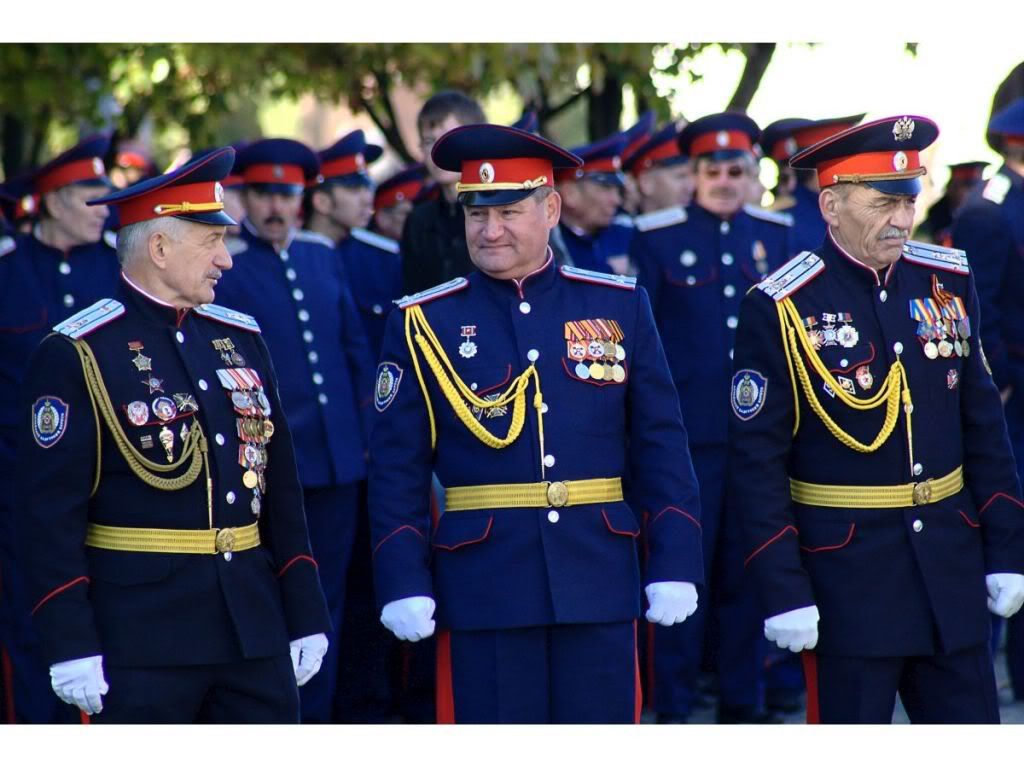 The Cossack in the centre looks European, but the other two look more Eastern |
||
|
Me Grimlock not nice Dino! Me bash brains!
|
||
 |
||
medenaywe 
AE Moderator 
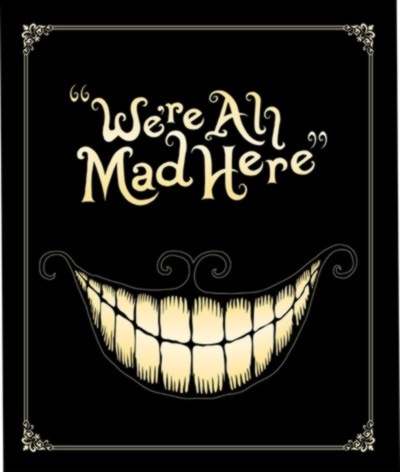
Master of Meanings Joined: 06-Nov-2010 Location: / Online Status: Offline Posts: 17084 |
 Quote Quote  Reply Reply
 Posted: 23-Nov-2012 at 13:23 Posted: 23-Nov-2012 at 13:23 |
|
|
I prefer more Hindu than Mongol!Hindu&China examples=Mongols...Hindu&European=Hindu Europeans.
How did they come there?That's a long story to tell.Lot of them have no idea i suppose.Click above for DNA check.  Surprise follows it... Surprise follows it... |
||
 |
||
Ruslan 
Janissary 
Joined: 10-Sep-2012 Online Status: Offline Posts: 23 |
 Quote Quote  Reply Reply
 Posted: 25-Nov-2012 at 00:48 Posted: 25-Nov-2012 at 00:48 |
|
|
Sergey Kuzhugetovich Shoygu, is a Russian political figure who was
Minister of Emergency Situations from 1994 to 2012. He holds the
military rank of General of the Army. He is also the President of the
International Sport Federation of Firefighters and Rescuers. Sergey was born Chadan, Tuva to a Tuvan(Mongol) father and a Russian mother.
 Yuriy Ivanovych Yekhanurov, is a Ukrainian politician who was Prime Minister of Ukraine from 2005 to 2006 and Minister of Defense in from 2007 to 2009. On July 14, 2009 he was appointed as the first deputy head of the Ukrainian Presidential Secretariat. Yekhanurov was born in the village Belkachi in the far-north Yakut ASSR, which is currently the Sakha Republic within the Russian Federation. Yekhanurov, an ethnic Buryat (Mongol),moved to Ukraine during Soviet time.  |
||
 |
||
Ruslan 
Janissary 
Joined: 10-Sep-2012 Online Status: Offline Posts: 23 |
 Quote Quote  Reply Reply
 Posted: 25-Nov-2012 at 00:55 Posted: 25-Nov-2012 at 00:55 |
|
   Edited by Ruslan - 27-Nov-2012 at 08:47 |
||
 |
||
Ruslan 
Janissary 
Joined: 10-Sep-2012 Online Status: Offline Posts: 23 |
 Quote Quote  Reply Reply
 Posted: 27-Nov-2012 at 08:44 Posted: 27-Nov-2012 at 08:44 |
|
|
information in Japanese
ロシアはモンゴル帝国支配の後遺症が http://www.youtube.com/watch?v=Ads1Mcw5k58 フランシス·フクヤマの見解によると、ロシア政府の構造は、伝統的なモンゴル略奪道の上に構築されます。ロシアはあまりに民主決してありません。スターリンとモンゴルの支配の原理。プーチンはむしろ他のよりも、21世紀のモンゴル人です。 ロシアはまだ豊かな国であるため、ここでモンゴル率いる正統的に実現し、国民は愛され、彼は富の一部を割り当てる必要があります。これは低い税負担と低い負債の理由です。上記の理由により、ロシアの抗議のために、我々は感謝し、これらの活動を奨励するだけでなく、モンゴル系を倒すことができなければなりません。  プロクレムリン青年フォーラム写真の議論に参加するプーチンセリガー湖(トヴェリ、350キロ)モスクワの北に、ログアウト多くのロシア人はプーチンは今やモンゴル目や頬骨を持っていることを指摘した。 "プーチンはモンゴルです!"プーチンの若い民主党リーダーローマの絵を指摘多布洛霍托夫小さな目は言った。彼は書いた: "彼は彼の顔がマイクジャック速いように、背後に隠されたハンカチかけることになりながら、ジルベルトアレックスが短く、悪である。" 出所:ザッククラフトセンター ロシアの後もともと容易ではない酔ってますが、モンゴル人によって、何百年もの間の結婚やその他の理由により1月19日に報告されたイギリスの "タイムズ"、モンゴルの遺伝子を残した多くのロシア人、従ってアルコールを支配していたの代謝やモンゴル、他のヨーロッパ諸国に比べてかなり遅く、そう簡単に酔って。 健康の専門家のロシア省麻酔研究センターでは、一連の実験を行ってきた、彼らは12人のボランティアが一時間でウォッカの0.35キロを飲みましょう、それから、彼らはいくつかの疑問を提起し、コンピュータゲームをプレイするためにそれらを整理し始めた呼気試験とその地位を守ってください。その後、戻って寮にボランティアがスリープする。翌朝、豪華な朝食後に、ドリンクを受け入れテストに影響を与えます。 その結果、専門家は、他の人よりも倍高いモンゴル人の遺伝子ボランティアの血中アルコール濃度と、見つかった局用酔っそれらのアルコール分解ロットが遅いため、さらに強力なパフォーマンスはまっすぐではありませんが、簡単に興奮し、思考泥だらけの混乱、さらには突然のうつ病。 センターの研究者ウラジミールへの取り組みは、ジンギスカンshuaibingの子孫は多くのモンゴル人の日、それまでの間、支配以上の二世紀までにほとんどのロシアの地域を征服した、としている、13世紀には、早ければ指摘ロシア人との結婚、モンゴル遺伝子を持つように、彼らの子孫。 専門家は寒いロシア気候と指摘したので、人々は暖かい飲むことを余儀なくされ、かつなぜなら政治的·経済危機のソ連崩壊後、あるケースでは、トラブルに多くの人々の生活、神経を麻痺させるために大量の飲酒を通過する必要があり、地元産のウォッカのうそと相まってワイン、こうしてモンゴル遺伝子ロシア人はロシアの酔っぱらいのような印象を引き起こしもっと酔って、結果をより速く "飲む。 晩年にはほとんど違いはありませんいくつかの若い年齢でロシア、白とヨーロッパ人はモンゴル人の特性を大幅に見える。最も典型的なブレジネフは、非常にエリツィン、ジューコフ、チモシェンコ、顔の特徴やモンゴルに近く、白のヨーロッパ人は大きく異なる。ロシアの少数の人々。 中年ロシア人は大抵ある背の高い頭の比率は、従来のヨーロッパ人で見つけることはほとんど不可能で顔、モンゴルの唯一の特定の割合を占めている。 人々の外観を過小評価しないでください、薄い顔ではない米国の大統領を参照してください?今やオバマ。と頭の割合が全くソ連はそれほど大きくありません。 例えば、精神文化の性格、考え方は、プーチンにロシアの独裁的な伝統と有力政治文化、古代ロシアのツァーリ、ソ連の書記長、見て、実際には、それはモンゴルのハーンの亜種ではありません。 北ヨーロッパと北アジアでは、古来より、全体です。紀元前3世紀、モンゴル人の祖先からフン族の時代以来、フン族は現在のモンゴル、シベリア、ロシア、中央アジア、北満州、モンゴル、中央アジアの遊牧民絶えず含む、カスピ海から万里の長城への広大な地域を支配する、西アジア、ヨーロッパ、民族間の結婚。ロシアの16世紀モンゴルの黄金軍団コントロール、およびそれ以降のクリミア汗国、カザン汗国、シベリアハン国、アストラハン汗国ノガイ族、青アカウントカーンの13世紀国、白ロシアのハンモンゴル汗国は18世紀の終わりまで続きました。影響力の帝政ロシアの球でシベリア、モンゴルへ帝政拡大した後、ソ連の崩壊の100年の時までは、モンゴルは常にロシア軍の一部となっています。 [図]フンの活動範囲  [図]13世紀のモンゴル帝国  [図]19世紀には帝政ロシア、影響力の領土と球  また、13世紀前にヨーロッパ全土に広がるゲルマン民族的侵略、男性どこでもゲルマン人々とレイプされた女性を、モダンなヨーロッパ大陸法、西洋の人々の男系、ポルトガル、イタリア、バルカン諸国やイギリスゲルマン人の80%以上を作り、モスクワ惜しまれていません。モスクワの住民は、11世紀にモスクワの住民、8世紀には、母親の遺伝子が完全にリンクされていることがわかった考古学的な遺伝子の研究では、東スラヴ人で、父方の遺伝子はほぼ半分に変更します。 13世紀に、モスクワ、より強力な生殖侵略者の到来を告げるに周囲の領域である、モンゴル人、モンゴル人、ゲルマン人、本当の意味での白人、モンゴロイドと白人の濁った血濁った血も、強大なモンゴル氏族長とは、ビザンチンの王女と結婚した。もっと致命的な、モンゴル人は、地元の女性たちが降下を持つ子どもを出産した。 モンゴルの習慣に従って行わなければならないことは、大規模な虐殺の領域をキャプチャし、車軸の男性よりも背の高いものがぞろぞろの略奪の女性の冷酷な虐殺されています。 Fubeishoudiを避けるためにそうすることを目的として、; 2つの生物学的植民地、モンゴルの人口は非常に希少なものであり、これらの捕食女性の子孫は、自分自身の一部となります。 モンゴル人がキエフ·ルーシを征服したとき、キエフ大公がポーランドに逃げ、地元の男性は、ほとんど何Tuをされています。ヨーロッパではロシアの人々の祖先と正確には、ロシアの人々のための主な理由を見るのが待ちきれない。西欧諸国、ゲルマン人のほぼすべての子孫、少なくとも父系はゲルマン人々である。ロシア父方のほぼ完全にモンゴル人。地元のモンゴル人がヨーロッパの女性を略奪し、白い子孫提示特性は明らかである。正確に自分の体の遊牧民の遺伝子から後でロシア拡張過激派キャラクター。 [図]モンゴル略奪ヨーロッパ女性  120年後、巨大な、陛下がモンゴル人であり、母系は完全に白人のタタール人の一部であるヨーロッパでは、すべての民族グループの人々の新たな国家を成熟。自己見なさ数よりもさらに東欧、南欧、中央ヨーロッパ、西アジア、中央アジア、北アジア全域タタール人は、純血モンゴルOiratsです。民族のロシア13世紀の歴史、そしてタタール泥だらけの歴史の別の部分とのタタール戦争の事実の一部になっています。 [地図]モンゴル侵略はタタール人は、最も人口の多い民族、ロシアは今日になりました新しい民族タタール人の誕生に直接つながった  モンゴルロシア2半世紀を制御するためには、モンゴルの統治時代に、政治的願望に昇進するためにロシアの裁判所の君たちはジンギスカンファミリーの一つとなっています。モスクワはモンゴル、立ち上がりおよび拡張の制御下にある。ロシアの名ウラジーミル大公聖アレクサンドル·ネフスキーモンゴルバツーカーン自然の息子が、一般的にクワシニエフスキの孫を治療として、モスクワ大公ユーリDanilovichですモンゴルウズベキスタンカーンの妹と婚約した。 フィデル·ロスのTiシラアブラモビッチ(スモレンスクとヤロスラブリの定規)モンゴメリーティムール·ハーンの娘と結婚。フィデルモンゴルカーンの関係は、彼が自分のテリトリー内よりもさらにモンゴル·ハンに費やされた時間は極めて調和している。フィデルはPavlovskyによるこのようなココナッツ、シェイクフーノヴァルヴフ、S&P等後でヤロスラブリ連続定規、等を含む、モンゴルとTISIラ·アブラモビッチ氏の子孫の世代の結婚ローズ。彼らは1世代からロシア貴族に受け継がモンゴルの遺伝子が含まれる。 モスクワ大公アブグレイブ王子とモンゴルサルタカーン結婚の唯一の子の空のSi Tandingの孫は、彼らがロス焦点マグニトゴルスクファミリを行うために出産しました。纳里曼塔斯モンゴルTuotuoカーンの娘、グリッド下部ミナス次男より結婚。 カザン、アストラハン、シベリアハン、クリミア汗国、ノガイ族ハン国、青アカウント·ハンのモンゴル·ハンは、モンゴル貴族の白いアカウント·ハンが後でロシアの公国で働いていた、となった大公の多くは、貴族の姓の起源。大公のロシアモンゴル親族は300貴族の姓の上92、50王、13諸侯を持っていた。 モンゴルスモレンスクとヤロスラブリ大公とintermarried [図の世代 - フィデル·ローズTISIラ、アブラモビッチ [図]イワン雷帝、ロシアイエリナグリーン、カヤ、バトゥ·ハーン、チンギス·ハーンの即時イエリナモンゴルの子孫で有名な女性政治家の母  [図レース - ブラッター(ロシア語:セミヨンはKebuラトアルビオンを行う)。ロシア皇帝、チンギス·ハーンの直系の子孫  [図モンゴルタタール貴族のロシア皇帝バオリージ  [図]まで、ピョートル大帝の顔は明らかモンゴル特性を有している  [図]次にロシア軍の最高司令官で、ナポレオン敗北モンゴル男クトゥーゾフ  [図]ワリ·カーンイワノフ、ロシア帝国、直系卑属のジンギスカンShuchi学科、帝政拡大の軍隊の将校に大きく貢献しています。  [図1/4モンゴル血族関係のレーニン  [図]闘神 ブジョーンヌイ  [図]チモシェンコ元帥  [図]第二次世界大戦のドイツの首都グロデビコーブ全般を打つためにすべての方法  [図]メイン席列昂尼德·ブレジネフ局ソ連最高  ロシアは世界最大の国は、今日明白モンゴル因子の形成。 1920年代、ロシアのユーラシア教義は言った: "ロシア系と無関係西部、スラブは、(スラヴ民族)は何の関係もないと、" G柳Qiefuチョムスキーと彼の学生は、ロシア、モンゴルの統一、信用の少なくとも半分。ロシア文化トゥレイン成分に彼の名著 "のもう一つのユーラシア哲学トルベツコイは"モスクワはモンゴルのルールに感謝したいと指摘し、政府のロシアのシステムはまた、モンゴルです。本質的には、ロシアは正教会モンゴル国立です。モンゴルの影響借用語、郵便サービス、税金、衣類によってモンゴルの多数のモンゴルの影響でロシアの人々の日常生活は、軍事司法制度はモンゴルから学ぶことです。 モンゴル降下ロシアは遠大であり、この見解を形成すること:ロシア西アジア、東西洋人。有名なユーリ·カーン·梅谢尔斯基、将軍さえアンドレ谢尔基佐夫、Yermolov多赫图洛夫馬秋金、モーアデビイワノフ、Panqinを残す巨匠がメンデレーエフ、メチニコフ、パブロフ、四半期米里亚泽夫のようなものである。;史家レフ日Linsky、ロシェルBaqie福将軍内側よりKanjiemier;カラムジンと極地科学者チェリュースキン岬、チーリコフらは、モンゴルの祖先を持っています。 ロシア国家のほか、モンゴル文化と芸術は深い押印、ロシア文学佗ドストエフスキーとツルゲーネフそこモンゴル降下、唯一モンゴルで最大の小説家のうち3つを残している草原小説の淡い草原 "など他に類を見ない深い理解と経験を書き留めてツルゲーネフの降下。ダンサーウラーノワ;アンナバスPuのペトロワは、モンゴルの祖先を持っています。 世俗的に好戦的な宗教的な服従のロシアの政治的、経済的、軍事的膨張などの権力の中央集権化に農奴システムは、モンゴルの正統から継承されます。 [図]文学の巨人ツルゲーネフ科学修士パブロフ、巨大なチャンピオンツバルアリエフ、キックボクシングチャンピオンフィデルカフ、メガバトルトーナメント王ウォーカーカーンなどの近代的なモンゴルの降下ロシア有名人、ポップミュージックのスーパースターローマン赤ちゃん  ソ連時代には、モンゴルのシニアリーダーシップのメンバーで、ソ連、多くの人の娘、有名なモンゴルの政治局メンバー、Maidar評議会第一副会長の大臣と結婚した。政治局補欠委員、ウランバートル、市立の第一号秘書アルタンナイチンゲールル、中央委員会の政治局補欠委員、Mengsu CPAFFCメイン席贡布扎布、ベネズエラ、国家計画委員会の閣僚理事会の副会長、メイン席索德诺姆、ベネズエラ、国防第一学科クラウド·テン、ベネズエラ、外務省第一副大臣、副大臣にマネクチョウク。モンゴル、中間レベルの幹部夫人ソ連はもっと多かった。 ロシアとモンゴルの結婚で[図]現代で最も有名なのは、特にムー嘉ツェデンバル、モンゴル局の中尉最高裁社長の娘であるモスクワ守備隊司令リオレオニードフィラトフ、モンゴルです夫人アナスタシアモンフェッラート人形  [図]現職モンゴル民法ウィル党首、モンゴルS·オーウェンの元外相。モンゴル父、母ロシア。  [図]現在のロシアの国防長官、セルゲイShoigu、かつてのモスクワ知事、父は俄罗斯图瓦モンゴル、ロシア人の母である。  [図]最後の皇帝の間に有名な共謀者Badmaevと彼の妻  [図]ロシアとモンゴル間の結婚フォークなどの星よりも大きい  古代から北アジアの遊牧民はモンゴロイドとコーカソイド泥だらけのアセンブリであり、フン帝国はそう、モンゴル帝国は、そのロシアも同様です。遊牧帝国の特徴:ヨーロッパとアジアのように好戦的な民族のブレンドの広大な、過疎と軍事的に強い、集中、拡大。 歴史的には、スウェーデン、フランス、ドイツ、部門決勝のこれらのトラはロシアの広大な土地で無敗。ロシアの強力な独自の遊牧民遺伝子は---すべて、ベーズを破壊勝ち - 遊牧民ので、彼らが失敗したときに、離れて漂流遊牧民はすべての物資を運ぶために必要はありませんが、略奪は方法の主な稼ぎ手であり、そこには "固定資産"がないので、その広大な敷地のおかげで、遊牧民に固執する必要はありませんでした - 草 - オリジナルと砂漠の緩やかな死の敵を。 20世紀、19世紀、第二次世界大戦でフランス軍遠征、ロシアは戦争の結果を決定するためにすべての方法を実行している恐ろしいと東に向かってドイツ語。戦いは、モンゴルの人たちクトゥーゾフ公爵実装されている場合でも同様です。フランス人のタタール人は(ヨーロッパ、ロシア - ロスと呼ばれる)ときに実際に旅団を旅して、自分の家や資本を燃やした。すべてのフランス軍の遺体はモスクワからダボランへの道に沿って凍死した餓死する。 第二次世界大戦、独ソ戦争、似たような状況でフランスとロシアとの戦争。凍死と餓死するのが最も生きている150万の死にスターリングラード。 4年間、巨大な戦いの数十、そしてフランス軍の強力なドイツ人はロシアで氷や雪を飲み込んだとして - ローズ。 敵、彼らは作戦土政策の究極の失敗に直面したロシアの領土の敵は泥沼に陥るようなものであるように、偉大な深さ、常に不十分で物資や部隊、ロシア、正確遊牧民道、ロシアの広大な領土、遊牧民のような大規模な草 - - オリジナルと砂漠の対戦相手はどこでも、すべての占領軍の不足どこでも四面楚歌のジレンマ、ロシアの広大な領土と疲労状況に焦げた土のポリシー相手に基本にこだわって、焦土作戦は遊牧民の戦略的な大規模な移行です - ライン - など。後で先進国では農業国、あるいは本当に "焦土戦争"ではありませんが、ロシアだけが無敗の状況で常にできるように、ロシアの遊牧民の遺伝子がこれを行うことができます、我々はそれを他の帝国を行うことはできません - 。 ナポレオンの敗北  欠点から生まれた農業国は農業国は無限の遊牧民の移動性に直面して、たとえ農業民族攻勢遊牧民、しばしば、生き残るためには "軒並み守備崩壊の全範囲を"自分の家を維持しなければならず、その固定資産です草 - 元、砂漠は、十分な資金と人材と遊牧民Zhouxuandaodiはありません。前漢全国民軍は依然としてフン族を倒すことができませんが、フン族はその後、中国への長期的な脅威であり続ける。一見、畏敬の念を起こさせるが、実際には初期の明皇帝朱ディ征服ノース元 - 図 - 顔の風景は、単に相手を打ち負かすが、偉大な明の皇帝朱QizhenまもなくモンゴルZhuozouすることはできません。 ロシアの征服の歴史は完全に例外なく、すべての深刻な国と国とロシアとの国境を罰せられる、頑丈な遊牧民の遺伝子を継承しています。ヨーロッパの植民野蛮な世界を征服するための方法が、ほとんどの誰も - ロシア人の終わりは、資本主義のビジネス誘惑の欲に属しているに似ているので、特にヨーロッパの植民者、ある程度の物事の英国の道の挙動自らのモラルや価値観の影響と励ましによって。ロシアはすべての制約に縛られていない - 、 - ロシア、征服と略奪は、遊牧民の生得的な概念である普遍的な価値である。膨張過程におけるロシアも挫折しても一時的な障害を被ったが、国は、ロシア、ロシアの人々を破壊することができなかった - である - なぜならこれを行うことができるため、その遊牧民の遺伝子。ロシアに対してのみロシア隣国の侵略と他国侵略は自滅する運命にある。 現代技術遊牧民後継装備ほとんど横行ロシアの遊牧民を征服しようとしている自分の脳をラックの世界帝国がナポレオンの人外の敗北を継承し、ヒトラーの終焉、日本が失敗し、封じ込めの英国の戦略的な政策で一定のついにバルト海におけるロシア包囲、黒海、ペルシャ湾、アフガニスタン、極東、守備サークル、正直に多数の挫折の後、英国に封じ込め政策を実施する、しない - 程度、実装を成功させるの - 、全体でロシア包囲、 - 人間 - 祝福。これらの成功は、しかし、なぜなら火器武装遊牧民本当の無敗の "キングコング"、彼らがどんなに強力な、または失敗する運命にしていたとしても、攻撃的政策のイギリス人やアメリカ人が実装した場合、防衛の前提を確立することである - 根本的な - それを打つことができない。 ロシアでモンゴル帝国の影響 ダスティン·ホセイニにより---- はじめに ロシアの歴史は常に戦争や権力闘争で鍛造比較的悲しいと激動の一つとなっている、と 急激な変化。これらの変更は頻繁に強制的にというよりも、進化を通じて、ロシアの際卸売突っ込まれています ほとんどの人々の歴史のように徐々に、測定方法。早い時間から、ここで我々は "キエフ·ロシアを知る RUSは、 "様々な都市(例えばウラジミール、プスコフ、スズダリ、キエフなど)の王子は常に戦っと口論 消費電力、小型半統一状態の制御のため。聖ウラジミール(980-1015)とヤロスラフの治世下 ワイズ(1015-1054)は、キエフの状態は、その最高点であったと、過去数年とは対照的に、相対的な平和を達成しました。 歴史が行っとして君臨支配者が死亡したしかし、一度、権力闘争が続いたとの戦争が再び勃発し。 1054年に彼の死は、彼の息子たちにprincedomsを割り当てるために前に、それはおそらく賢明ヤロスラフの決断だったそのセット 次の200年のためにキエフロシアの未来。様々な間の内戦は、この決定を受けて 息子たちは、それが後で必要になる重要なリソースのそれを排出し、はるかにキエフ·コンフェデレーションの荒廃し。王子として 絶え間なくお互いに戦った、キエフの状態が徐々に減衰したとして知られている都市のコンフェデレーションは、減少 と、かつての栄光を失った。さらに、そのようなPolovtsy(別名として草原の部族の侵略により弱体化 結局ペチェネクによって以前Cumans / KumansまたはKipchaks)と、キエフ状態による買収の機が熟していた 遠い国から、より強力な侵略者。 しかし、この前、ロシアは彼らの運命を変更する機会があった。モンゴルが最初に入ったとき、それは1219年前後であった 今度は、ロシアの支援を求め、Polovtsyに対する動きでキエフ·ロシア最寄りの地域、 王子。王子の評議会は、要求、モンゴル人を心配しての行為を検討するキエフで開催された。従った 史料には、モンゴル人は、彼らがロシアの都市や人々を攻撃したり、攻撃していなかったことを宣言 彼らの土地。モンゴルの使節はロシアの王子の平和を要求した。しかし王子は、モンゴルを信用しなかった モンゴルの進歩はRUに継続することを疑う。その後、モンゴルの使者は、速やかに殺された と平和のための任意のチャンスを骨折キエフ状態の君たちの手で破壊された。 20内 年は、バトゥ·ハーンは、200,000、男性の軍隊とモンゴルから行進。ものなど、ロシアの公国ずつ リャザン、モスクワ、ウラジーミル、スズダリ、とロストフはバトゥと彼の軍隊に落ちた。軍は、略奪や都市を破壊し 人々を虐殺し、囚人や奴隷のような多くを取った。モンゴル人は最終的に取り込まれ、解雇され、破壊された キエフ、キエフ·ロシアの象徴的な中心。そのようなノヴゴロド、プスコフとしてのみ離島北西の君主と これらの都市は、間接的な征服に耐えるとの支流になるだろうがスモレンスクは、猛攻撃を生き延びた ゴールデン大群。おそらく、平和を作るためにロシアの君主の決定は、これを回避している可能性があります。しかし、それはありませんでした ケースとその誤算のために、ロシアは永遠にその宗教、芸術、言語の面で変更されていました、 政府、政治地理学。 東方正教会 初期のモンゴルの猛攻で、多くの教会や修道院が略奪され、破壊されつつ無数の信奉者 教会へと聖職者のスコアが殺害されました。しばしば生き残った人々は囚人を取られ、奴隷にされた (Dmytryshyn、121)。モンゴル軍の力と大きさのただのショックは計り知れなかった。苦痛だけのようだった それは、社会的、精神的だったので、本質的に政治的、経済的。モンゴル軍は彼らがから送信されたと主張し 神、そしてロシア人はモンゴル人が実際に自分の罪に対する罰として神によって送られたことを信じていた。正教会 教会はモンゴルの征服の "暗い"時代に強力なビーコンになるだろう。ロシア人だろう 最終的には自分たちの信仰に慰めを求め、指導·支援のために正教会を探して、性格が内向的だ。 人々は、ロシアの修道院生活の種を植えたいであろうターンこの草原によって征服されたショック フィノウグリアン語部族、今として知られているZyrianians(のような人々の転換に大きな役割を果たす 小海)だけでなく、ロシアの北部地域の植民地化(ベルナドスキー、379)。 王子と町会が被った屈辱は、彼らの政治的権威の断片化が発生していました。 政治的統一のこの損失は、教会が宗教と国家の両方のアイデンティティの一実施形態として上昇させ 失われた政治的アイデンティティのギャップ(Riasanovsky、57)を充填しながら。 iarlykのユニークな法的概念(発音は ' yarlīgh ')、または免疫のチャーターは、また、教会の強化に貢献した。 M?NKE-TEMの治世と URは、iarlykは1267正教会のためメトロポリタンキリルに発行されました。教会は下にあったものの 10年前にモンゴル人の事実上の保護(カーンバークの下で実施1257年の国勢調査より)、このiarlyk 正式に正教会の保護を命じた。さらに重要なこと、それは正式にいずれかから教会を免除 モンゴルやロシア当局による課税の形(オストロウスキー、19)。そして聖職者が登録されていないことが認められて センサス時に、その彼らは、さらに強制労働や兵役(ホスキング、57)の責任を負いませんでした。 予想されるように、正教会に発行iarlykの結果が深遠であった。初めて、教会 ロシアの歴史の他のどの期間よりも豪壮な力にあまり依存するようになるだろう。正教会ではあった かなりの率、非常に強力で教会をかけることになります1の土地を取得し、統合すること モンゴルの買収に続く世紀の位置。免疫のチャーターは、厳密にモンゴルの両方を禁じたと 教会の土地を押収または正教会から任意のサービスを要求してからロシアの税務エージェント。これによって強制された シンプルなペナルティ - 死(ベルナドスキー、377)。 教会がこんなに早くその使命に敷設され開発されたもう一つの顕著な理由 - キリスト教を広め、変換する それらはまだ田舎に異教の練習。正教会の内部構造を強化するために、 メトロポリタンは、管理の不備を軽減するために、土地全体で広く旅し、監督する 司教と司祭の活動。また、相対的な安全保障(経済、軍事、そして精神的な) 周囲の庵は、田舎から小作人を魅了。周囲の中でこの高まり都市開発など 教会のプロパティの庵は、もともとのメンバーを与えるために設立された平和な雰囲気を破壊した 修道院は、改めて処理を開始する、新しい庵を確立するために荒野にさらに外に移動します。 創立宗教集落のこのシステムは、しばらくの間継続するとの増強に貢献した 正教会(ベルナドスキー、377から8)。 発生した最後の大きな変更点は、正教会の中心の位置であった。モンゴル前 ロシアの領土を侵略し、キエフは、教会の中心だった。キエフの破壊に続いて、教皇庁に移動してください 1299で、最終的に1322年のモスクワ(ホスキング、72)にウラジミールは、モスクワの重要性を強化するために助ける 著しく。 芸術 ロシアの芸術は、最初にそのアーティストの大量強制送還、禁欲的な復活との焦点を被っているが 正教会のほうに向き直った注目は芸術の復活につながった。何がロシアを定義 - これで 彼らが状態なしであった決定的な瞬間は - 彼らのキリスト教とその敬虔な信仰を表現する能力であった。 トラブルのこの時間の間に、Theophanesギリシャやアンfなどの偉大な芸術家は、play(Figes、299から300)に入って来た。 それは半ば14世紀にモンゴルのルールの後半だったロシアの図像とフレスコ画 絵は繁栄を再び始めました。 Theophanesギリシャは後半1300年代に到着した。彼が飾られていて作業 特にノヴゴロドとニージニーノブゴロドの土地全体の様々な教会、。モスクワでは、彼が描いた 大天使ミカエル(マーティン、教会で働いていただけでなく、受胎告知教会のイコノスタス 233)。 Theophanes '到着後数十年、アンfは、彼の最も意欲的かつ重要な生徒の一人になるだろう。 図像は10世紀にビザンチウムからロシアに来たが、13世紀におけるモンゴルの侵入をカット ビザンチウムからロシアオフ。 言語 言語学的効果は、第1些細に見えるかもしれませんが、言語のような影響を判断し、理解することが私たちを助けて どの程度1帝国は人々の別の人またはグループに与えたため - 行政、軍事、貿易の面で - 同様の影響が含まれているどのような地理的範囲に関して。確かに、社会言語学であっても言語や影響 ロシアから何千もの単語、フレーズ、他の重要な言語機能を借りとして、偉大だった モンゴルとモンゴル帝国(Dmytryshyn、123)の下に統一されたチュルク語。いくつかを以下に示します まだ使用されているいくつかの例を示します。全ての大群の様々な部分から来ました。 амбарアンバー納屋 базарバザールバザール деньгиden'giマネー лошадьloshad '馬 сундукsundukトラック、胸 таможняtamozhnya税関 チュルク語起源のロシア語の一つ非常に重要な機能は、口語的な言葉の使用ですдавай これは、 "レッツ... 'のアイデアを表現したり'してみましょう、さあ..."(Figes、370から1)。一般的ないくつかを以下に示します 例はまだロシア語で一般的に見られる。 Давайчайпопьем。 Davaiチャイpopem。 'のお茶を飲みましょう。' Давайвыпьем! Davai vypem! 'さんを酔わせて、さあ! " Давайпойдём! Davai poidyom! "行こう、行こう!" また、タタール/チュルクロシア南部起源とヴォルガ川の土地の地名の数十があります これらのエリアのマップ上で目立つ川。そのようなペンザ、アラトゥイリ、そしてカザン 'や地域の名前などの都市名 Chuvashiaとバシコルトスタンのような例である。 管理と制度 最初は1どれがロシアであることを熟考したときに全体主義の春のイメージは気にするには、次の現在の時代から ソ連は依然として国家だったとき、さらにはロシア帝国へ前へウラジミール·プーチンの大統領、。 しかし、キエフ·ルーシでは、民主主義の形態が存在しなかった。すべて無料男性市民、veche(вече)で構成されていた 戦争と平和、法律、諸侯への招待や追放などの問題を議論するために会った町議会 vecheのそれぞれの町、キエフ·ロシアのすべての都市vecheを持っていた。それは本質的に市民の事務のフォーラムでした 議論し、問題を解決します。しかし、この民主的な機関はモンゴルで深刻な縮小に見舞われた。 断然アセンブリの最も影響力のあるノヴゴロド、キエフであった。ノヴゴロド、他に特別なvecheの鐘(内 町は、教会の鐘)は、この目的のために使用される通常のだったが、一緒に町民を呼び出すために作成されました アセンブリ、および理論的には、誰もがそれを鳴らすことができます。モンゴル人がキエフの大部分を征服した後の時代に ロシア、vechesは、北西部地域でノヴゴロド、プスコフなどを除くすべての都市で消滅した。 Veches これらの都市で機能し、モスクワ自体は15世紀末にそれらを征服するまで開発を続けた。 しかし、今日のパブリックフォーラムとしてvecheの精神は、以下を含む、ロシア全体でいくつかの都市で復活した 特にノヴゴロド。 モンゴルの君主にとって非常に重要な税の徴収のために許可された国勢調査の集計では、だった。へ サポートセンサスは、モンゴル人は、軍事知事率いる地方行政の特殊デュアルシステムを課し basqaqi(баскаки)、および/または民間人知事、darugi(даругы)。本質的に、basqaqiだった 耐性であった地域で支配者の活動を指揮する責任が与えられ、若しくは忌避した モンゴルの権威。 darugiは提出していた帝国のそれらの領域を監督した民間人の知事であった 戦いまたはそれを考慮したことなく、既にモンゴル軍(オストロウスキー、273)に平定。のただし、支社 basqaqiとdarugi、時折権限と目的にオーバーラップさせながら、必ずしも常に否定しなかった 同時に。 我々は歴史から知っているように、キエフ·ロシアの支配つかさに来たモンゴル大使を信用しなかった 初期の1200年、彼らと平和を話し合う、王子は残念ながら剣にチンギス·ハーンの大使を置く やがて心から支払った。このように、13世紀にはbasqaqiに征服した土地に駐留していた 人を意のままに操る、王子でさえ日々の活動を承認します。さらに、ほかに 国勢調査を確保し、basqaqiは地域住民(マーティン、150)の徴兵を監督した。 既存のソースと研究はbasqaqiが大きくすることにより、中間ルーシの土地から消えていたことを示しています 十四世紀には、ロシアのように、多かれ少なかれ、モンゴルの君主を受け入れた。 basqaqiの左のように、darugiは交換 それらのパワーインチしかし、basqaqi異なり、darugiはルーシの土地の境界に基づいていない;で 事実、それらはサライではなく、これまで現代のボルゴグラードから位置黄金軍団の古い首都に駐留した。 darugiはルーシ "の土地に関する専門家として主に機能し、それに応じてカーンを助言した。つつ トリビュートと徴集兵を収集し、提供者の責任は、遷移と、basqaqiに属していた カーンがいるのを見たときに私たちが実際に王子自身に転送darugiへbasqaqiこれらの義務から 王子はそのようなタスク(マーティン、151)を完了できた。 モンゴル人によって行われた最初の国勢調査では、ちょうど17年ロシアの土地の征服した後、1257年に発生した。ザ 人口は10の倍数で、その使用を延長モンゴル人によって採用されていたシステムに分割されました 彼らの帝国の全体に亘って、国勢調査では、徴兵制のためだけでなく、課税のための第一の目的を務めた。 それは1480年に大群を認め停止した後にこのような行為はモスクワで行われた。魅了練習 ロシアへの外国人観光客は、誰に、大規模な人口調査は、まだ知られていなかった。そのような訪問者、ジギスムント·フォン· ハプスブルクからHerbersteinは2〜3年ごとに、王子は国勢調査を実施しているという事実メモした (ウィットフォーゲル、638)土地全体。国勢調査の服用は、19世紀初頭まで、ヨーロッパで普及しないでしょう 世紀。我々がしなければならないことを一つの重要な観察である程度になるように徹底的にロシア 国勢調査は、絶対主義の時代に、別の120年かそこらのために他のヨーロッパ諸国では達成されなかった行った。 少なくともこの分野でモンゴル帝国の影響は明らかに深く、効果的であったと強いを作成するのを助けまし ロシアの中央政府。 basqaqiが監督と維持していることが一つの重要な機関があった山芋(投稿のシステム)であった シーズン(ホスキング、89)によると、食糧、寝具、馬、コーチやそりのどちらかを提供するために構築。に 第一モンゴル人によって構築され、山芋は、許可との間の重要なコミュニケの比較的急速な動き 氏族長とその地域の指導者だけでなく、方法はすぐに間に、地元や外国使臣を派遣 広大な帝国を越え、様々な公国。各ポストは、同様に許可された者が使用するための準備ができて馬を持っていた 特に長い旅のために疲れた馬を交換するとして。各ポストは通常から一日の乗車の周りに配置されました 最寄りの郵便。地元の人々が、ポストを維持するために馬を養うために、とのニーズを満たすことが義務付けされた 彼らのポストを通って移動する使者。 システムは非常に効率的であった。ハプスブルク家の使者ジギスムント·フォン·Herbersteinによる別の報告書では述べている 山芋システムは彼が72時間以内に500キロを(ノブゴロドからモスクワまで)走行可能 - よりもはるかに高速 どこでもヨーロッパでは(ウィットフォーゲル、639から40まで)。山芋システムは、それらの上にタイトな制御を維持するためにモンゴル人を助けた 帝国。 15世紀末、王子イワンIIIにおけるロシアへのモンゴルのホールドの黄昏時年の間に の確立されたシステムを維持するために、山芋のシステムのアイデアの使用を継続することを決めた コミュニケーションと知性。しかし、我々はそれを知っているように、郵便制度の考え方は、今日に入って来ないであろう 1700年代初めにあるピョートル大帝の死後まで存在。 モンゴル人によってロシアに持って来らいくつかのような機関は、時間の経過とともにロシアのニーズを満たすために変換され、続いた 黄金軍団の後に多くの世紀。これらは非常に複雑なの発展と拡大を増強 後、帝政ロシアの官僚。 Edited by Ruslan - 27-Nov-2012 at 08:54 |
||
 |
||
medenaywe 
AE Moderator 

Master of Meanings Joined: 06-Nov-2010 Location: / Online Status: Offline Posts: 17084 |
 Quote Quote  Reply Reply
 Posted: 27-Nov-2012 at 12:43 Posted: 27-Nov-2012 at 12:43 |
|
|
If i knew at least 20 000 words of Japanese language will be new Bub in Japanese beginners online school Rusian!It is evident mixing of different DNA inside characters above and thats good!Love&Travel works till today as we can see!
 Regards. Regards.
|
||
 |
||
Post Reply 
|
Page 12> |
| Forum Jump | Forum Permissions  You cannot post new topics in this forum You cannot reply to topics in this forum You cannot delete your posts in this forum You cannot edit your posts in this forum You cannot create polls in this forum You cannot vote in polls in this forum |
Copyright ©2001-2009 Web Wiz
This page was generated in 0.172 seconds.











 Printable Version
Printable Version Google
Google Delicious
Delicious Digg
Digg StumbleUpon
StumbleUpon Windows Live
Windows Live Yahoo Bookmarks
Yahoo Bookmarks reddit
reddit Facebook
Facebook MySpace
MySpace Newsvine
Newsvine Furl
Furl Topic Options
Topic Options